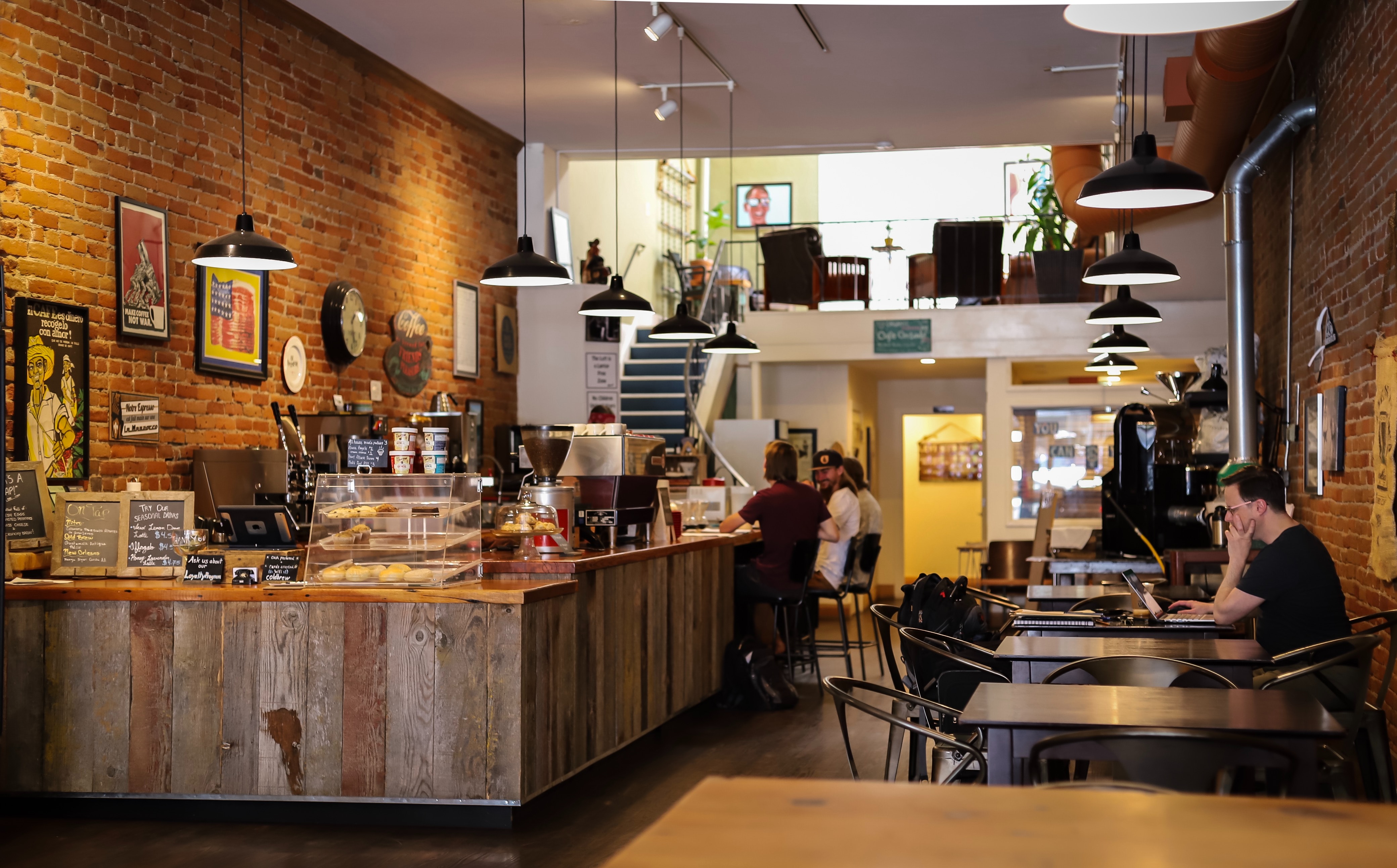Ghost Kitchen: COVID-19 Driving Innovation Forward
Ghost Kitchens are on the rise, offering an innovative solution to the restaurant industry's COVID-19 crisis.
Discover the importance of a well-crafted menu to the success of your business and get useful tips on how to create one that works.

The restaurant menu is often underestimated in the hospitality industry, yet it is the most important marketing tool of any restaurant. It is not just a list of food and drinks, but rather the business card of your establishment, reflecting both your image and your gastronomic concept.
In this step-by-step article, you will discover restaurant menu design tips that will help you create a successful menu and what to look for when creating a great menu:
In the world of modern dining, restaurant menus can be divided into several categories. Start by understanding these categories, as they will help you make the perfect choices for your restaurant:
The term "à la carte" is French and means "according to the menu." In the restaurant world, this is a way of saying that menu items are priced and ordered separately.
The du jour menu is a fantastic option for restaurants that want to showcase a daily special or emphasize the use of fresh, seasonal ingredients.
A cycle menu is simply a menu that offers the same choices repeatedly over a period.
The static menu is the most popular menu type. It is known for its reliability, ease of navigation, and variety of options.
Such as beverage menu or dessert menu.
When creating a restaurant menu, restaurateurs must first decide what dishes to offer. Keep in mind that too many choices can cause guests to doubt the freshness and quality of your food. A reduced selection, on the other hand, will make your offerings appear high quality and less overwhelming. You will also reduce your inventory and avoid any surpluses. So find the right balance and offer the right quantity to suit your restaurant concept.
The layout of the restaurant menu also plays an important role in the perception of your guests. Food and beverages should be grouped logically and clearly to facilitate orientation. For this reason, the menu is often divided into the categories of appetizers, entrees, desserts, and drinks.
Once the structure and arrangement are determined, it's time to describe your dishes. Use vivid adjectives such as "spicy" or "fresh" and emphasize the origin of your ingredients throughout the menu. Use descriptive text to create emotion and an appealing image in your guests' minds. Descriptions such as "juicy cheeseburger with homemade sauce and crispy fries" will whet the appetite more than "cheeseburger with fries". Applications based on artificial intelligence (AI) such as ChatGPT can also support you in the creative design of your descriptions.
There should be no grammatical or spelling errors in your menu. You should therefore check it several times – or use AI-based tools to formulate your menu without errors. Also, make sure you do not correct any changes by hand. Remove items from the menu when they are no longer available and keep it updated.
Once you have determined the structure of your menu, the next important step in menu design follows: The design, color choices and layout.
Whether modern or classic, illustrated, or plain and simple. There are many ways to design your menu card. The style of your business and the atmosphere you want to create play an important role. After all, the menu should express your brand identity and evoke recognition among your guests. From the design to the colors to the fonts – consistency and legibility are important.
For example, use a colored graphic symbol to indicate additives, allergens, or vegan, vegetarian, or gluten-free dishes. However, the symbol needs to be clear, so your guests know what it means right away.
Do you want your guests to prefer a certain dish? You can highlight it graphically. You can also add photos to make it easier for your guests to understand, for example, the specialty of the house.
You are free to choose the format and material of your menus – nowadays they are available in a wide variety of designs. Just be sure to consider the extent of your offer and the preferences of your guests when designing your menu.
In any case, make sure the menu is resistant to dirt and moisture, because no guest wants to hold a dirty menu in their hands. For example, use menu covers to protect the pages from dirt.
With digital tools, you can create accurate daily and weekly menus in minutes, including legally required labeling such as nutritional information and allergens. Choose from the provided templates and customize the colors to match your restaurant concept, for example.

In addition to listing your food and drinks, you should also list your prices. Pricing is especially important for your menu, because if your prices are too low, you won't make a profit. If they are too high, you will probably attract fewer customers.
Finding the right balance is important. Restaurant software solutions can help you determine the cost of goods for each individual recipe. This allows you to profitably calculate the selling prices of your dishes. The Best Seller, Slow Seller analysis also helps to identify high margin or money losing items.
Not only the right price, but also the design of the price label is an important part of the menu creation process.
Customers will focus too much on the price of your dishes. Instead, mix expensive and inexpensive items in your listing.
Research on price psychology confirms that prices without currency symbols always appear lower. This allows for a more subtle communication of the price of the item and keeps the guest focused on the experience itself rather than the cost of the experience.
Include some expensive foods and drinks on your menu. They may not be ordered often, but they have an important impact on your guests' price perception. This is because they make inexpensive dishes seem even cheaper.
These are prices that seem cheaper to your guests than they really are (e.g. choose $ 1.99 instead of $ 2).
Studies show that customers are more likely to spend money if they don't have to part with it in physical form. Also point out that your store accepts credit cards.
If you're a restaurateur, you've probably come across the term "menu labeling laws" and wondered if they apply to your business. Menu labeling laws are designed to ensure that certain restaurants provide customers with calorie and nutrition information right on their menus.
The first critical factor to consider is the jurisdiction in which your restaurant operates. Menu labeling regulations vary from place to place and include countries, states, and local governments.
The second consideration is the type of restaurant you operate. Menu labeling laws typically apply to establishments that offer standardized menu items, such as fast-food chains or franchise restaurants.
The next step is to determine if your menu items meet the criteria for menu labeling. In the United States, the Food and Drug Administration (FDA) requires restaurants to provide calorie and nutrition information for menu items intended for immediate consumption. Note that items intended for takeout or delivery may not be subject to menu labeling requirements.
Finally, you should be aware of the consequences of failing to comply with menu labeling requirements. Failure to comply with these laws can result in fines and lawsuits that can be very costly to your business.

In the digital age, the restaurant industry has found new ways to simplify operations in many areas. One such innovation is the digital menu. Instead of traditional paper menus, many restaurateurs are turning to tablets, QR codes, and mobile apps to present food and beverages online.
A digital menu has many advantages: First, dishes and prices can be easily updated, which is especially important for seasonal changes or special offers. It is also easy to display images and descriptions of dishes, which helps diners choose what to eat. The digital menu also allows customers to add online reviews where they can give feedback on the quality of your menu, for example.
The design of a digital menu can vary from restaurant to restaurant. Many already use tablets or screens at the tables where customers can browse the menu.
Alternatively, QR codes can be placed on tables for guests to scan with their smartphones. The menu is then displayed on their own device. In most cases, orders can also be sent directly to the kitchen.
The fact is: Your menu is the flagship of your business.
Although it is often underestimated, it is one of the most powerful marketing tools in many restaurants. A well-thought-out menu not only attracts customers, but also contributes significantly to the success of your business.
There are many different factors to consider when planning and designing a menu: From the selection of items to the colors of your menu to legal requirements. Use our tips to create the perfect menu for your restaurant. By doing so, you will leave a special impression on your guests and invite them to return in the future.
Ghost Kitchens are on the rise, offering an innovative solution to the restaurant industry's COVID-19 crisis.
Find out why it is essential for every restaurant to have an attractive website and how to create one that will inspire your visitors.
Find out how to ensure your success with accurate sales forecasts, and learn effective steps and technologies for creating them.
Make sure you never miss out on updates and trends about digitalization in the hospitality industry by subscribing to our monthly newsletter. You will receive useful information delivered directly to your inbox.